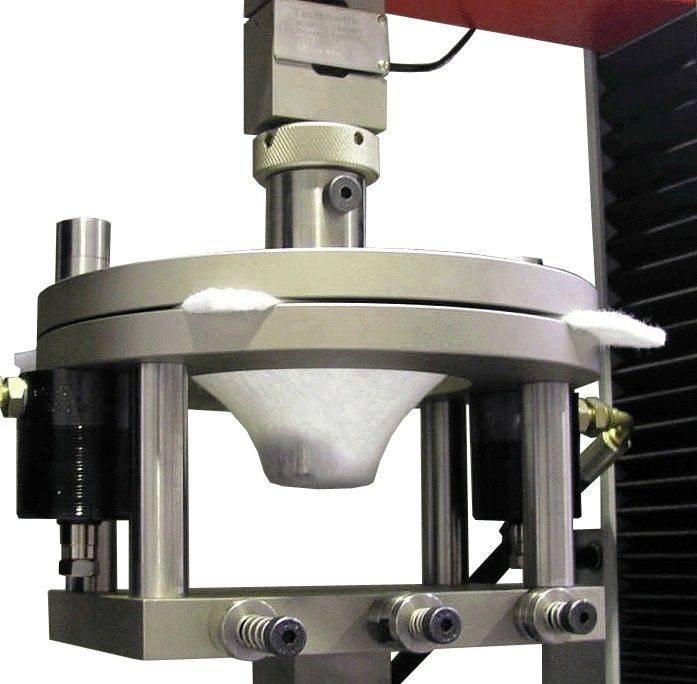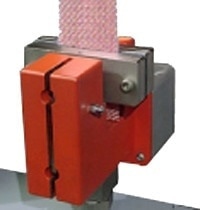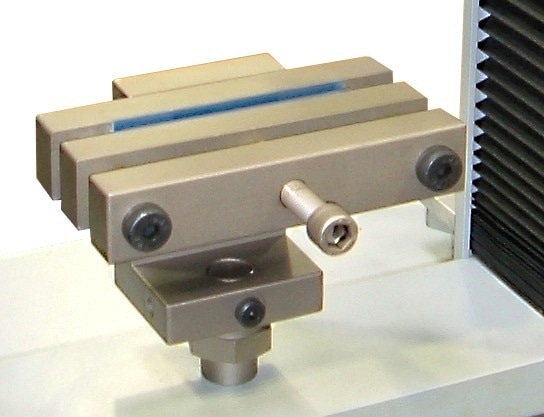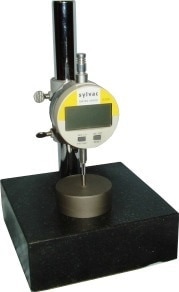Today, geogrid and geotextiles are extensively being employed in civil engineering and other related industries. Hence, it is important to ensure that the material is subjected to specialized testing, thereby making it suitable for its proposed application and environmental conditions.
Testometric provides a wide range of strength testing machines and accessories that are designed specifically for testing geotextiles, capacities ranging from 5 to 300 kN.


Grips
Standard grips can make it difficult to hold certain geotextiles and hence are not suitable for such purposes. With years of experience in the field, Testometric provides a wide range of manual, hydraulic, and pneumatic grips that are particularly designed for these materials. These grips can hold the sample without slippage or damage. The cmpany also offers a wide range of puncture rigs.


Extensometry
In some applications, elongation has to be measured over a particular section. Testometric offers a range of video extensometers and non-contact lasers that can be used with this type of material.


 Please click here if you would like more information on the instrument used in this article or a quote
Please click here if you would like more information on the instrument used in this article or a quote
Thickness
Testometric also provides various digital measuring devices for determining core, nominal and asperity thickness of geogrid/geosynthetics.


Software
The advanced Windows NT/.Net software comes with industry specific calculations for testing geotextiles etc. to international standards.
- ASTM D4533 Standard test method for trapezoid tearing strength of geotextiles
- ASTM D4595 Standard test method for tensile properties of geotextiles by the wide- width strip method
- ASTM D 4632 Standard test method for grab breaking load and elongation of geotextiles
- ASTM D 4833 Standard test method for index puncture resistance of geotextiles, geomembranes and related products
- ASTM D4884 Standard test method for strength of sewn or thermally bonded seams of geotextiles
- ASTM D4885 Standard test method for determining performance strength of geomembranes by the wide strip tensile method
- ASTM D5199 Standard test method for measuring the nominal thickness of geosynthetics
- ASTM D5262 Standard test method for evaluating the unconfined tension creep behaviour of geosynthetics
- ASTM D5323 Standard practice for determination of 2% secant modulus for polyethylene geomembranes
- ASTM D 5397 Standard test method for evaluation of stress cracking resistance of polyolefin geomembranes using notched constanttensile load test
- ASTM D5494 Standard test method for the determination of pyramid puncture resistance of unprotected and protected geomembranes
- ASTM D5884 Standard test method for determining tearing strength of internally reinforced geomembranes
- ASTM D6241 Document summary – Standard test method for the static puncture strength of geotextiles and geotextile-related products using a 50mm probe
- ASTM D6392 Standard test method for determining the integrity of nonreinforced geomembrane seams produced using thermo-fusion methods
- ASTM D6496 Standard test method for determining average bonding peel strength between the top and bottom layers of needle-punched geosynthetic clay liners
- ASTM D6693 Standard test method for determining tensile properties of nonreinforced polyethylene and nonreinforced flexible polypropylene geomembranes
- GRI GG1 Geogrid rib tensile strength
- GRI GG2 Individual geogrid junction strength
- GRI GM10 The stress crack resistance of HDPE geomembrane sheet
- GRI GM12 Asperity measurement of textured geomembranes using a depth gauge
- BSENISO10319 Geotextiles – Wide-width tensile test
- BSISO7304 9073-3 British standard methods of test for nonwovens Part 3:
- Determination of tensile strength and elongation
- BSISO7304 9073-4
- British standard methods of test for nonwovens Part 4: Determination of tear resistance
- BSENISO 9073-4 Textiles – Test methods for nonwovens Part 4: Determination of tear resistance
- BS6906 British standard methods of test for geotextiles Part 4: Determination of the puncture resistance (CBR puncture test)
- UNI8279 Italian standard. Nonwovens – Test methods – Determination of punching resistance and breaking deformation (penetration method)
- BSENISO 12236 Geotextiles and geotextile-related products – Static puncture test (CBR-Test)
- DIN54307 Testing of textiles; plunger puncture test (CBR)
Testometric materials testing machines

This information has been sourced, reviewed and adapted from materials provided by Testometric Company Ltd.
For more information on this source, please visit Testometric Company Ltd.